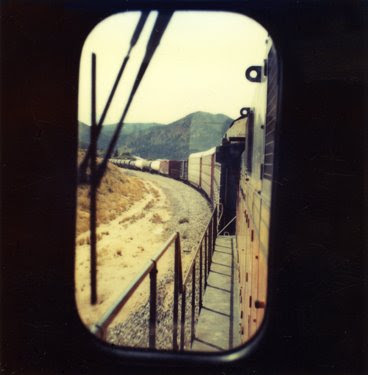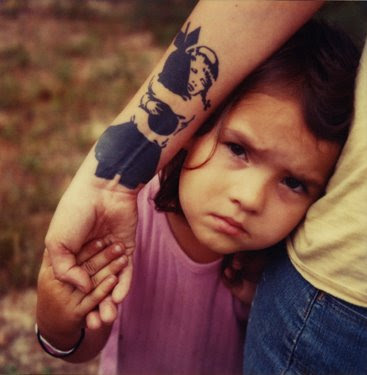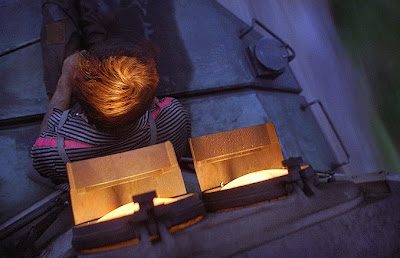



From an interview with Fecal Face.com:
Do you have any inside knowledge on cheap polaroid film hookups?
Besides shoplifting, no.
What do you do to pay the bills?
Random shit, I can't have a job. That's just not where I'm at right now. I've realized that. I need to be able to do whatever the hell I want when I want. Which not havin a job doesn't necessarily guarantee, but it's a start. From march 6th -24th I'll be checked into a pharmaceudical lab and will be takin 450 mgs of arthritis pain medication. If I make it out alive I'm getting a tax free $3500. Which technically is going to be similar to getting paid $8.50 per hour, but I get paid for sleeping and eating.
That's crazy. How did you come across something like that and is there any chance of any long term issues with taking that amount of medication? I bet you have to sign some crazy papers for that shit.
Yeah, a friend told me about it. The first day I signed my name on about 25 different forms. It's not that bad really. These kind of things have been goin' on for awhile all over the country. This is really the only way pharmaceaudicals can be prescribed. They gotta be approved by the FDA first, and that's where I come in. This particular drug I think can really fuck up your pancreas though, so I guess its better that I'm doing this now than when I'm 40, because I think I have a super buff pancreas right now.
Mike Brodie, a.K.a. The Polaroid Kid(d), is the lazy, seedy personification of American anti-culture, albeit with a super buff pancreas. He arrives towards the trailing end of a stream of contemporary anti-heroes - drifting alcoholic loners who spend their time hanging out in dives and junkie squats, living in the occasional company of a host of deranged, unwashed addicts and petty criminals, with an accidental post-punk wardrobe and a vocabulary of thick slang with its origins in the nocturnal murmurings of crashed-out crack whores.
Modern cultural icons like Burroughs, Bukowski and even Tom Waits have glamourised urban squalor and, as fellow American Dream apostate Chuck Palahniuk puts it, 'hitting bottom'; legendary photographer William Egglestone and his innumerable disciples visualised this extraordinarily 'ordinary' p(erspective in a quiet panoramas of 'old tyres, Dr Pepper machines, discarded air-conditioners, vending machines, empty and dirty Coca-Cola bottles, torn posters, power poles and power wires, street barricades, one-way signs, detour signs, No Parking signs, parking meters and palm trees crowding the same curb' (shameless Wikipedia crib of Eudora Welty, The Democratic Forest) as possessing surreally menacing qualities. The stubborn ordinariness of life, desire and failure takes on a terrifying beauty and poignancy. Apparently.
The miracle of the genre, however, is the more worn out the cynical aesthetic becomes, the more profound the irony at its core. Brodie may be innocent of its legacy, but the self-conscious beauty of his portraits owes much of its significance to the endurance of the stark 'realist' - probably better classified as surrealist, ironical realist, or any number of ambiguous compounds of existing genres - aesthetic of the American Ordinary.




The images selected above are tame, well-balanced examples of work that draws on a wealth of dirt, tattoo ink and other cultural debris. A more striking demonstration of his skill in capturing his subjects is probably Untitled #12 and Untitled #23 from his 2007 exhibition at the Needles & Pens gallery. Both images depict an eviscerated possum lying on a cardboard box. #12 includes the murder weapon, a small kitchen knife, and the killer, a faceless figure in a butcher apron with bloodied hands and a black dog at his side; #23 is more vague, with only the lower body of the mangled creature visible from under the wide brim of a hat as another unidentifiable person leans intimately close over the creature's corpse - too close, clearly, but the action is obscured by the hat. Both shots are ripe with a fragile, luminous tension and elements of the surreal and arcane - even the bloody viscera glows a pale, almost floral, pastel shade of orange in the washed-out nostalgia of traditional film. There is very little to imply the purpose of the brutal slaughter, although the presence of the apron suggests that you probably don't want to know.
The simplicity of the zero-time Polaroid and, since the decline of the Polaroid camera, 35mm has a consistently illuminating touch that draws each image out to the dividing line between the mundane and sublime poignancy. Brodie's affection for his old-school equipment is a strong point in favour of the significance of his 'accidental documentary photography' as works of art; he is the founder of the vibrantly eccentric site plrds.com (Updated 2-Feb: The website link shifts, but this URL is current), which as one of the least navigable websites ever devised also has an exciting spontaneity to the content you may or may not be able to extract from it. You should be forewarned that Brodie has, for example, a loosely abstract idea of what a domain name is and it is not worth following up any of those occasionally printed on random pages.
 Self-Portrait by Mike Brodie
Self-Portrait by Mike BrodieAfter the eviscerated rodent it may not surprise you that Mike Brodie looks more like a budding serial killer than a walnut-complexioned, denim-clad loner with an unfiltered cigarette smouldering between an incomplete set of yellowing teeth. Clearly there is a youthful quality to his work that is highly comparable to his Chinese contemporary Lin Zhi Peng, who goes by an equally moronic nickname: an easy social intimacy with his subjects, proof of his access to youthful and marginal subcultures; a slightly juvenile sense of humour that has a tendency towards broken or suggestive objects; a strong physicality in his portraits rather than a more languid, considered appreciation of the human form; and a whimsical optimism in terms of what constitutes a worthy image.
Still, it's quite clear that Lin Zhi Peng, No. 223, has had a lot more joy out of life as a young artist than Brodie. Brodie's subjects - by his own testimony, all people he knows well - seem entirely indifferent to his presence in his best pictures, and casually unresponsive in his more mediocre work. It's a subculture that's a lot less fun than it looks, apparently. The mere presence of No. 223 and his camera, by contrast, seems to send his cohort of of lithe Chinese adolescents into either paroxysms of gleeful excitement, acute states of confusion, or an ecstatic blend of both - where Brodie's camerawork is soberly illustrative, Lin's is feverishly generative.
At the age of 21, Brodie feels palpably older - if not more mature - in style than his contemporaries. As Art&Antiques Magazine elegantly puts it, despite a 'callow, scattershot approach to photography,...the contemplative Polaroids he’s produced over the past few years already feel like the work of an old soul.' Perhaps sifting through the tattered remains of the American Dream is wearying work; perhaps his taste in sweater-vests is an indicator of a prematurely aging taste. For his work and for his wardrobe, though, he might bear in mind that a more noble, macho sort of realism is creeping into his genre and consider casting his thematic net a little wider - potentially a risky maneouvre for someone widely praised for just that, capitalising on the idea of ethnography as art in itself and achieving significance by 'capturing a rare and valuable glimpse of a marginalised group', as the standard praise for this achievement goes.
With the massive market for journalism and amateur photojournalism that now exists online, as critics were swifter to point out in the case of Lin Zhi Peng, edgy subject matter does not necessarily make art. Stylistic consistency, technical prowess and a coherent vision make art, and whilst Brodie seems to have the potential to prove himself in all these areas, he will need to broaden his horizons first.
also on aS.blogspot
No comments:
Post a Comment